Story by Dino Brunori
Historic photos are Copyright protected from the Andrea Curami Collection
This is the first of a series about Etceterinis on the Mille Miglia
In the years between 1930 and 1960 every Italian car enthusiast had only one dream: racing in the Mille Miglia. And in the years after the war, when the sporting regulations allowed it, one might enter the 1000 mile race with a self-built car derived from or built with Fiat components. They could be rewarded with large sums of money if they won the category with Fiat parts.
This is the story of three brothers and how they realized their dream. Gianfranco, Camillo and Sandro Stanga were the sons of a Fiat dealer based in Orzinuovi, 20 km south of Brescia. The boys had literally grown up in the dealership’s workshop, where their passion for engines had fueled their dreams of racing, first and foremost in the Mille Miglia. When the race resumed after the interruption of the war years, Gianfranco and Camillo decided to build their own car in the family workshop to participate in the race.
The work began in the autumn of 1948. Starting from a chassis with a Fiat 500A engine built in 1938, they assembled a ‘barchetta’ car, equipped with Borrani wire wheels and modified the engine with the adoption of a Siata head, that in those years dominated in the competitions of the minor categories. The body in aluminum was built by Cervi & Corna of Brescia, a workshop mainly devoted in the transformation of cars into vans, a typical operation in Italy in the post-war years.
The two brothers started the 1949 edition of the Mille Miglia and ended 123rd O/A, a good result but almost two hours behind the Fiat Benedetti of Maggiorelli, winner of the 750 sport class. This result convinced them to prepare a new car that would be far more competitive than their first attempt. At the start of the 1950 race, the Stanga presented a ‘siluro con parafanghini’ (torpedo with fenders) built with a tubular Gilco frame, equipped with a Giannini G1 engine 625cc with a Siata head and aluminum body made by Rocco Motto of Turin, a body maker that worked for almost all the small builders. The race was lashed by the rain but our two heroes arrived 33 O/A and second in class, behind the Fiat Patriarca of Leonardi.
The discomforts suffered with the 1950 car convinced them to prepare a new car for 1951, a more comfortable ‘barchetta’ with bodywork by Motto, and again a Gilco frame and the Giannini G1 Siata engine. The car, the third built by the brothers, brought them back to Brescia 40th O/A, still second in class despite the total time was 30 minutes less than that of 1950. The car went perfectly and the brothers, after making further changes to the engine, returned with essentially the same car for the start in 1952. But this time the engine broke on the way back near Siena, forcing them to retire, after having achieved second in class at the mid-point of Rome.
For the 1953 edition, they decided that they had enough rain and cold, and so they commissioned a small berlinetta from Rocco Motto, still based on their classic Gilco /Giannini/Siata scheme. The car’s body was a scale copy of the Fiat 8V. Although the car was comfortable, the results were very unsatisfactory, with a 168th O/A and far from the placement they had obtained in previous editions of their favorite race.
With the same car the two brothers showed up at the start of the 1954 Mille Miglia, but even in this edition they were forced to retire. Disappointed by the failures of the last two editions, in 1955 Camillo bought back the torpedo they created for the 1950 event from a pilot from Brescia to whom he had sold it and entered it in the 1955 race. At the start, sitting beside him was his third brother, Sandro, who had replaced Gianfranco, and the two managed this time to return to Brescia with an honorable 123rd O/A. But now the competition was getting even tougher; on the scene appeared the bialbero engines of the Bandini and Moretti, with more horsepower than the old Giannini.
But the brothers didn’t mind for it was a romantic endeavor; being on the start line was more important than the result!
At the beginning of 1956 Gianfranco bought back another of their earlier cars. This one was found in Cremona and had originally been entered in the 1952 Mille Miglia. He entered the penultimate Mille Miglia with a romantic ‘solo’ without a copilot. But luck left him even before arriving in Rome.
But now for the brothers, participation in the MM was a family affair and a matter of honor.
After the 1956 edition, Camillo decided to build a new sport, the fifth car built in the family. Again using a Gilco chassis, he decided to adopt the mechanics and the engine of the Fiat 600, tuned up to 750 cc and a body built by Carrozzeria Manerbiese in a very shapely aluminum body as per the form of racing sports of the period. But again results were very poor: he was forced to retire when he was still last in class. The reason for this was that the car was assembled in a very short period and during the race a myriad of small problems occurred, causing the poor showing.
The end of the race in 1957 was the finish line of the cars built by the brothers, although Gianfranco continued to race, becoming an official driver for OSCA and winner of the Italian hillclimb championship in 1962.
Two of the cars survived: the barchetta (third car) still owned by the Stanga family and the sport (fifth) in the hands of a collector in Brescia. Both cars appear in the Mille Miglia today, as a remembrance of those years when you can build your own car and enter it a great race.
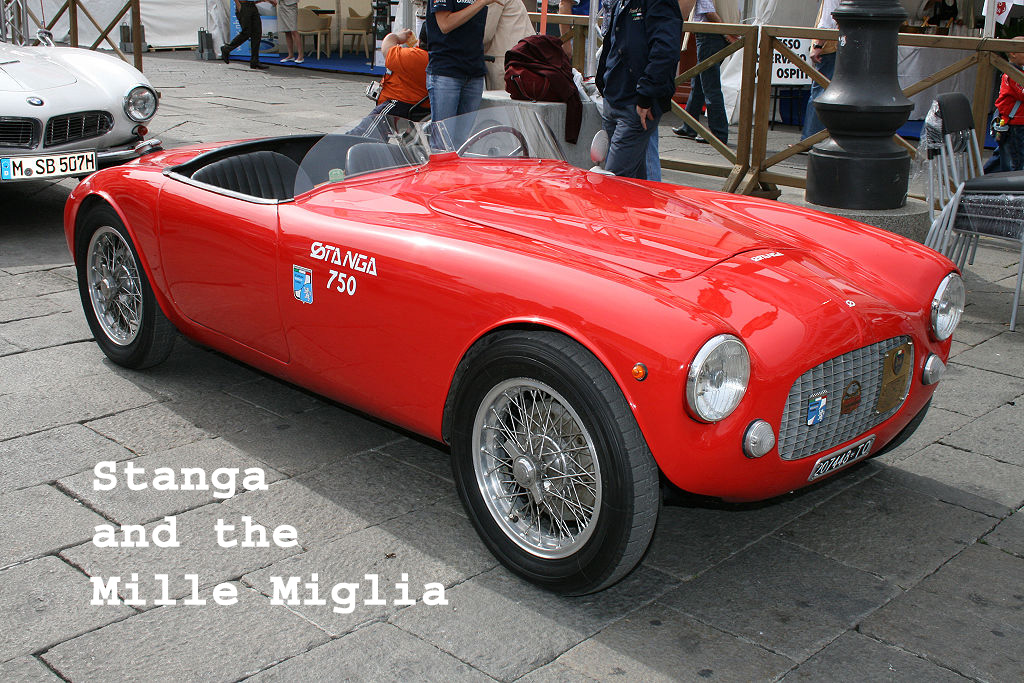
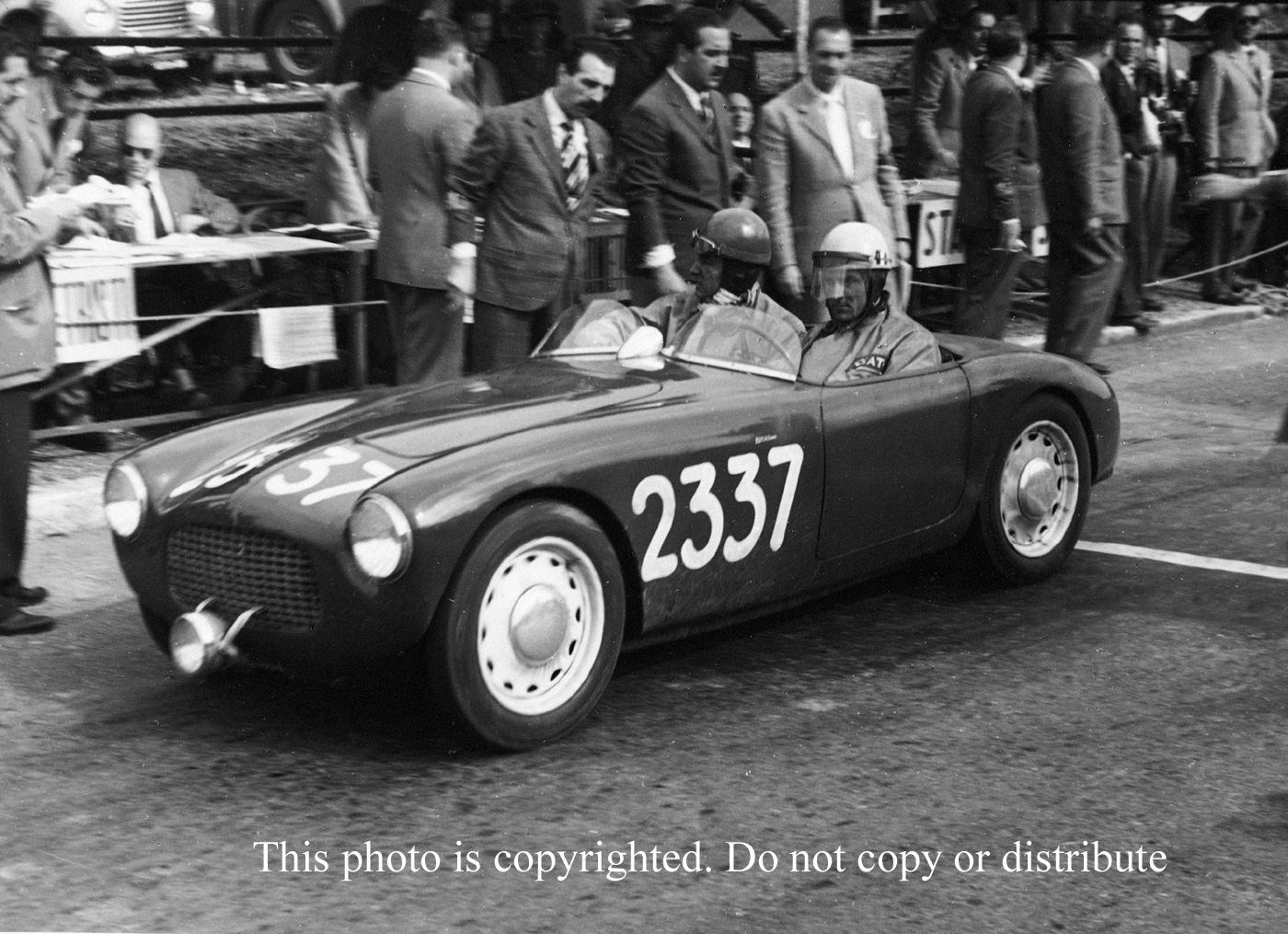
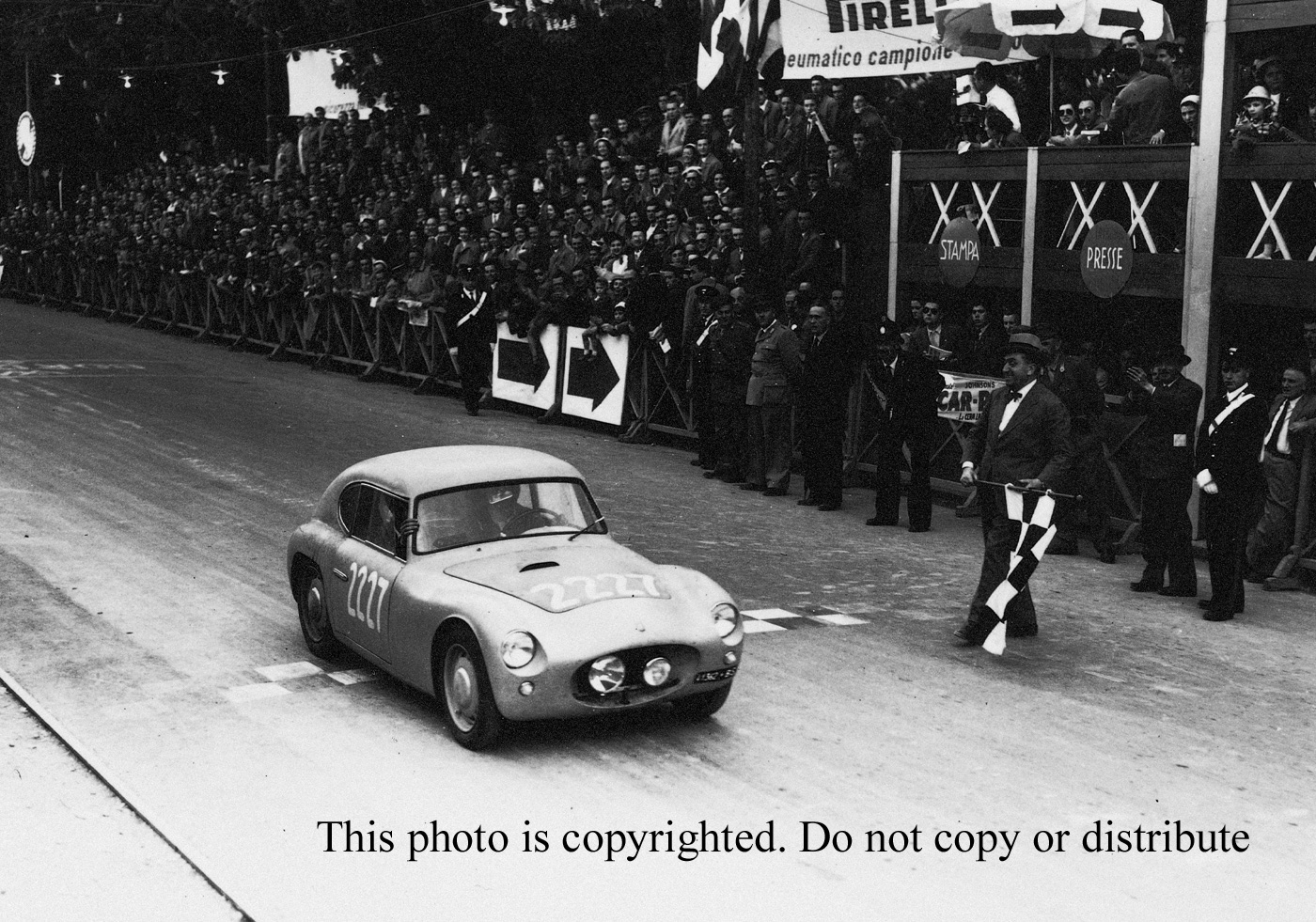
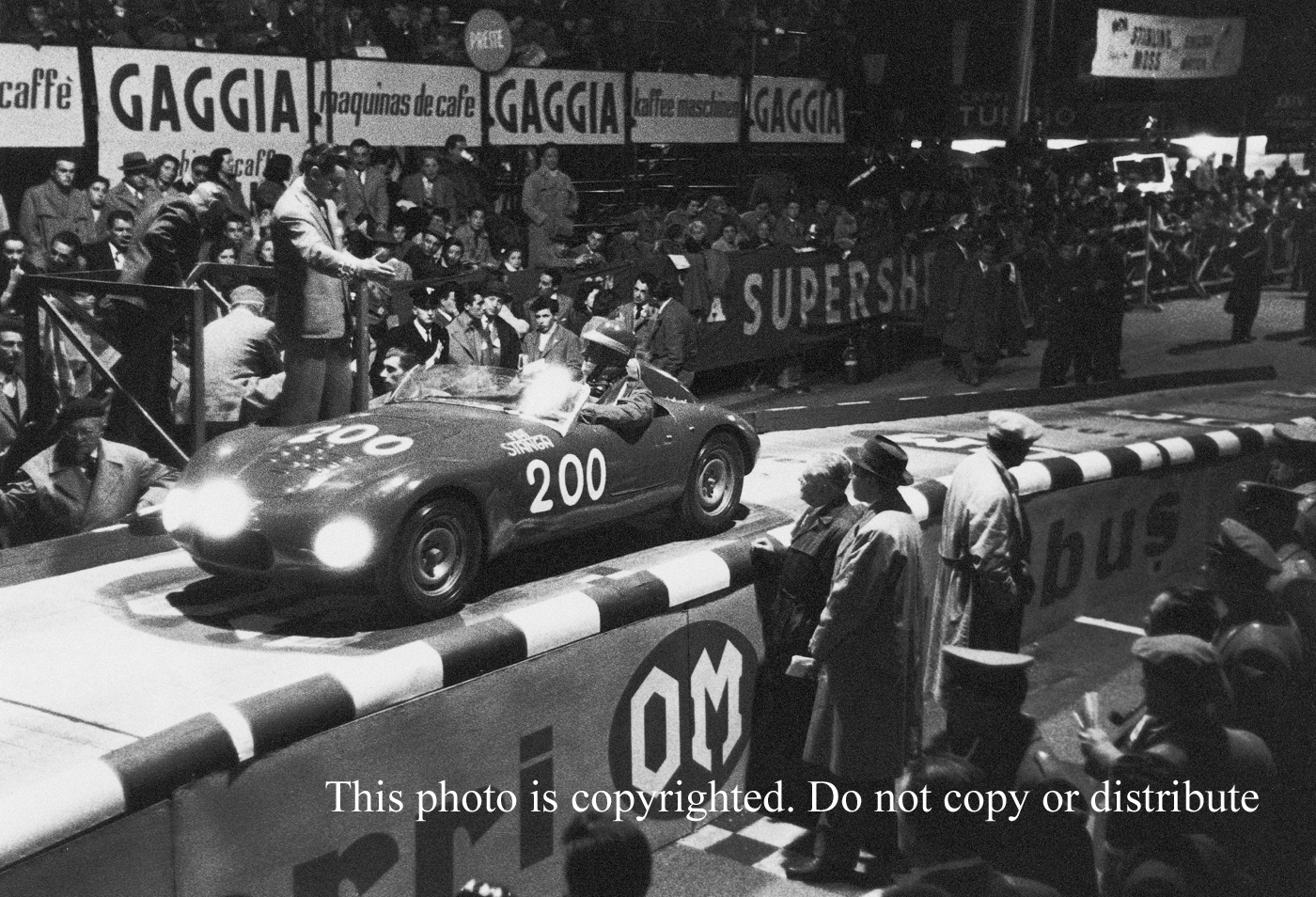
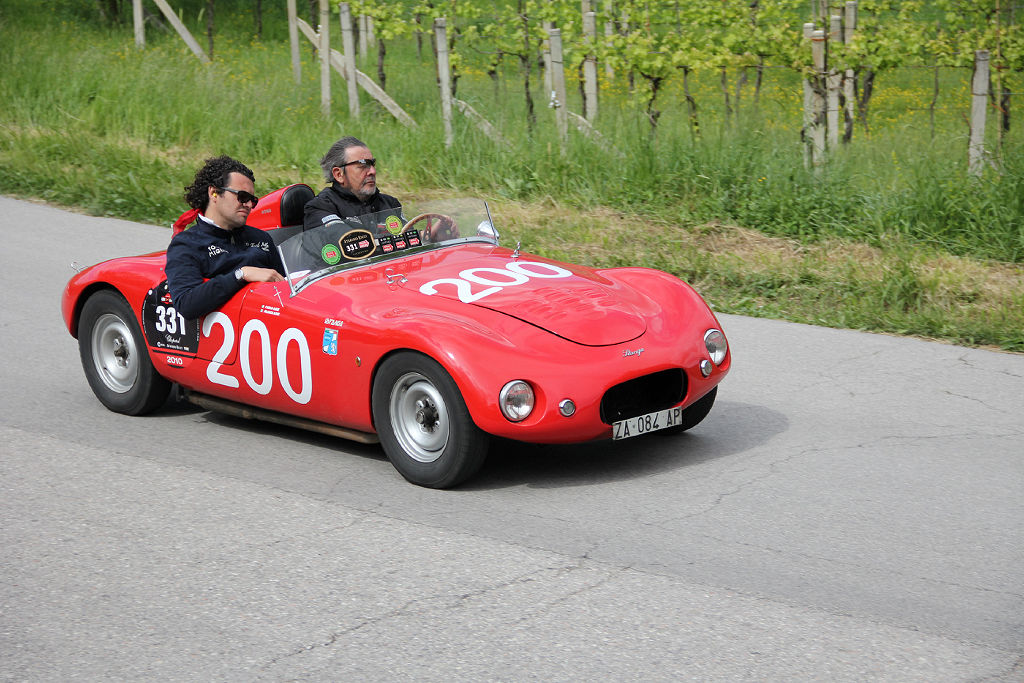
What a great story. Hard to imagine what great fun it must have been. The 750 in the lead photo looks for all the world like a miniature Ferrari. I see the nose of a 507 BMW just behind it.
This is why I subscribe to Veloce Today!
the m.m. should be run again with the only rule being the car can have a tread width of 5″
Hey Pete, I had always wondered about the story of the Stanga 750 sports. Dino Brunori just knocked it out of the park for me. I did not know it was Three brothers, like the Maserati’s and the Avalle’s. This particular era of small displacement sports racers and the men behind them is so cool. I think the small coupe has many design elements found in an Ermini built in the same era. Rocco Motto often repeated a similar body in larger or smaller wheelbases. wouldn’t we all like to drive one
Dino Brunori,
a great expert. His articles are always historical and exciting !
Does anyone know anything about this Stanga Barchetta that has been for sale on Hemmings for a while? I am wondering if it is legitimate or a reproduction.
https://www.hemmings.com/classifieds/dealer/fiat/barchetta/2034093.html
Very informative and of particular interest as there is such an amazing resemblance between my 1951 Siata Gran Sport and the Stanga. Interesting that mine was built by Stabilimenti Farina yet with the exception of the grill and headlight bezels and of course the beautiful Borrani’s, I would have assumed the Stanga was misnamed
Dino — Thanks for your magnificent account of the Stanga brothers and their attempts in the Mille Miglia. We’re all looking forward to your next story. To Harry Hart: there was always a lot of borrowing among Italian body builders. I always believed that the body buck used for the Siata Gran Sport was wheeled up the street to make the Ferrari 225. Both had been Michelotti designs and Alfredo Vignale had been an employee of Stablimenti Farina. Why make a completely new buck for just twenty-five cars? All the best and Merry Christmas. — Carl Goodwin
Thank you Dino,
Very well written. It’s nice to read stories about these important families and wonderful small cars.
Happy Holidays and all the best to you and your family.
Michael Kaleel
Dino,
Thanks for the beautiful story and photo too!
I’m waiting for your next story!